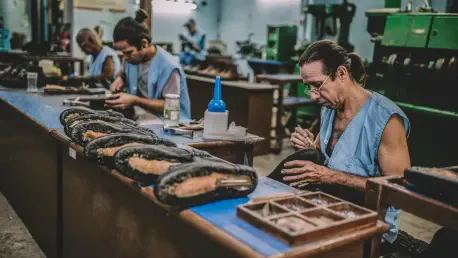The reshoring of manufacturing in the United States reflects substantial shifts in geopolitical strategies, economic policies, and technological advancements. It’s a movement with the potential to redefine domestic production capabilities, particularly in the technology sector. However, this transition encounters significant challenges, from aligning policy changes under different administrations to overcoming the established benefits of offshoring. This analysis provides insights into recent developments, exploring both the complexities of returning production to U.S. soil and evolving market dynamics.
Historical Shifts and Current Challenges
In the late 20th century, offshoring became a dominant trend in manufacturing, largely due to reduced labor costs in countries such as China and India. Companies pursued international supply chains to achieve greater profitability, diverting jobs overseas. This historical context sheds light on the current hurdles in reshoring efforts. The global supply chain configurations developed over decades create dependencies that are challenging to dismantle. Tariffs once reaching up to 104% under previous U.S. administrations have encouraged businesses to reconsider these established practices. Yet, the deeply entrenched systems continue to defend the practicality of production choices made abroad.
Analysis of Reshoring Strategies
Policy Interventions and Economic Impacts
Recent legislative measures such as the CHIPS and Science Act demonstrate an intensified focus on strengthening domestic supply chains, particularly for critical technology components like semiconductors. Policies from various administrations have attempted to pivot manufacturing back to the U.S., with varying success. Economic shifts, including labor cost fluctuations and trade policy adjustments, play pivotal roles in how companies strategize their production locations. Balancing domestic production with international sourcing becomes a complex decision influenced by these evolving economic factors and competitive threats in global markets.
Technological Innovations Shaping Reshoring
Automation and AI technologies offer unprecedented opportunities for redefining manufacturing processes. New advancements promise efficiency gains that lessen the cost burdens of local production. Regions adopting these technologies demonstrate unique strategies tailored to their market dynamics, presenting diverse outcomes that drive reshoring efforts forward. While some argue reshoring struggles against ingrained dependencies, innovations provide tangible solutions, challenging misconceptions about the impracticality of domestic manufacturing endeavors.
Future Projections and Strategic Recommendations
The future presents paths for transformative shifts in reshoring strategies. As smart manufacturing technologies evolve and workforce skills adapt to modern requirements, reshoring appears poised for accelerated growth. Market projections suggest a balanced approach to global production networks, with domestic initiatives becoming a focal point. To effectively navigate these changes, businesses must prioritize local workforce development and leverage technology to foster innovation. Policymakers are encouraged to align efforts with corporate strategies to bolster domestic manufacturing capabilities, thereby enhancing competitive resilience.
Reflections on Market Trends and Implications
Reflecting on these findings, reshoring demonstrates a blend of strategic necessity and complexity in modern manufacturing landscapes. Despite formidable obstacles, alignments between federal policies and corporate initiatives signal progress toward restoring production capabilities internally. The manufacturing sector faces a decisive phase where reshoring, driven by technological advancement and economic alignment, becomes critical for future growth. Strategic insights gleaned from this analysis underscore the importance of continual adaptability, where future considerations must focus on encouraging symbiotic partnerships between innovation and policy, enabling a resilient domestic manufacturing ecosystem.









